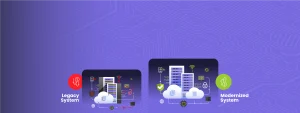Why Businesses Need to Harness the Power of this Technology.
The Field Programmable Gate Array (FPGA) landscape is transforming significantly as the technology becomes more powerful, efficient, and accessible. From high-performance computing to electronic trading, FPGAs are used in many industries. Due to their flexibility and adaptability, they are becoming increasingly popular among companies looking to improve their operations. Increasing usage of robotics and Industry 4.0, rising demand for FPGAs in advanced driver assistance systems (ADAS), and expanding use of data centers globally are some of the factors driving the growth of this market.
In this blog post, we discuss the reasons for this shift in the FPGA landscape, why it’s changing so quickly, and why it’s becoming increasingly crucial for businesses to understand and harness the power of this technology.
The technological advances
One of the main reasons for the technological advances in the FPGA landscape is that FPGAs continue to become more powerful and efficient, making them a compelling option for various applications. So, look for FPGAs wherever you see high-speed, cutting-edge technology, such as autonomous driving, electronic trading, or satellite communications. FPGAs’ processing power, massive bandwidth, and energy efficiency enable designers to create increasingly powerful solutions for various market segments and industries. With their ability to perform multiple tasks simultaneously for demanding applications, FPGAs are helping companies improve operations and stay ahead of the competition.
The accessibility of technology
Another reason for the change in the FPGA landscape is the increasing accessibility of technology. FPGAs are becoming more accessible to a broader range of companies and organizations. This accessibility is especially true for medium-sized businesses that need more resources to invest in expensive dedicated hardware. By using FPGAs, these companies have access to the same technology and capabilities as larger organizations. Because FPGAs can be programmed and reprogrammed as needed, they are used to test different design iterations and make changes as needed quickly. Testing can lead to a shorter development cycle and faster product market time. Additionally, high-level synthesis tools and IP cores can further speed up the design process by allowing for the creation of complex designs using a higher-level programming language.
The growing demand for technology
In addition to technological advances and accessibility, the FPGA landscape is also changing rapidly due to the growing demand for the technology. With the rise of big data and the Internet of Things (IoT), businesses are looking for ways to process and analyze large amounts of data quickly and efficiently. FPGAs are well-suited for these tasks, making them an attractive choice for companies looking to improve their computing capabilities.
Another area where FPGAs are becoming increasingly important is autonomous systems. The unique ability to handle large amounts of data in real-time makes FPGAs ideal for autonomous systems such as self-driving cars. To enable the new world of mobility, automated driving systems require the highest level of safety. In this new era of autonomous driving, automotive-grade FPGAs and MPSoCs (FPGAs with embedded ARM processors) offer high performance and low latency to enable safety-critical functionality. In addition, reprograming the FPGA after deployment allows for design changes and upgrades, driving functionality and performance efficiencies by incorporating new features and capabilities as needed.
FPGAs are also playing a more significant role in edge computing. In edge computing, data is processed locally rather than routed to a centralized location. This is particularly helpful for IoT applications where devices are frequently spread out or inaccessible. FPGAs are ideal for edge computing because they can handle data rapidly and effectively without a central data center. To include edge computing in service offerings, businesses must create an edge architecture that combines the best features of data centers, embedded systems, and application-specific computing architectures. FPGAs are a competitive alternative to more familiar GPU or CPU-based computing architectures because of their adaptability across all three applications.
In conclusion, FPGA technology provides numerous advantages to companies in various industries, ranging from improved functionality and performance to increased efficiency, cost savings, and a competitive advantage. However, designing with FPGA requires a specialized set of skills and knowledge. Working with an experienced FPGA design expert like Orthogone can help companies navigate the complexities of FPGA design and take full advantage of its benefits. Orthogone takes pride in its expansive FPGA/ASIC development. Our services span three distinct development options, each offering unique, cost-effective, and robust solutions catering to industry needs.
Minimize risks and rely on our expertise! To learn more about partnering with Orthogone, contact us.




